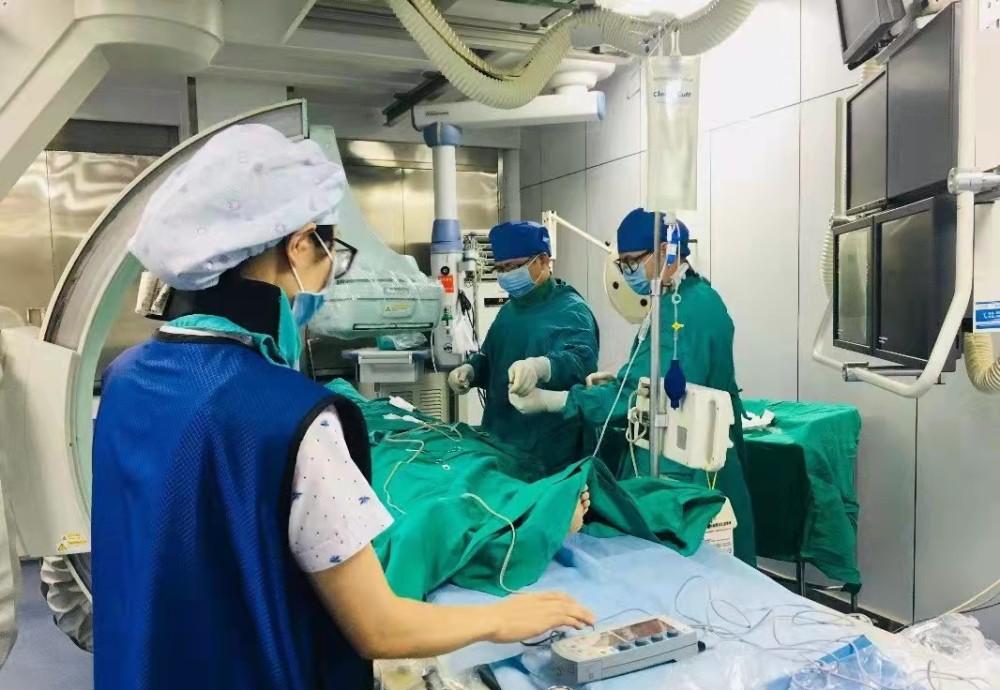Recently, the 60-year-old Uncle Li laughed and said that he "became a robot", what is going on?
It turned out that uncle Li fainted during morning exercise last week, and was sent to Hunan Provincial Brain Hospital (Hunan Second People's Hospital) by 120, and after emergency and post-examination and treatment, Uncle Li was diagnosed with "high atrioventricular block" and did permanent pacemaker placement at the selected stage.

Permanent pacemaker placement
The heart has a complex electrical system, also known as the cardiac conduction system. The heart itself generates an electrical energy that causes it to contract and relax according to the appropriate timing sequence, thus ensuring that blood is pumped to the body. For the heart to function properly, the chambers must beat in a coordinated manner (resting heart rate between 60 and 100 beats per minute).
The average adult's heart contracts about 100,000 times a day. If the frequency of electrical pulses due to myocardial inflammation, ischemia or aging is too low or conduction disorders, the heartbeat will slow down, the amount of pumped blood will be reduced, the blood supply and oxygen supply to the organs of the whole body will be insufficient, the patient will have symptoms such as dizziness and fatigue; if the pause between the two heartbeats is too long, the blood circulation stagnation time is too long, the patient will suddenly blacken in front of the eyes due to insufficient blood supply to the brain, loss of consciousness, and then wake up quickly after two or three seconds, clinically known as black haze syncope.
Although some drugs can treat the beat of the heart slowly, but can not be used for a long time, when the patient's heart conduction system organic lesions, the above symptoms appear, the installation of pacemaker is the only way.
A pacemaker is a miniature computer that is as large as two silver dollars stacked on top of each other. They are usually implanted in the skin just below the chest. Pacemakers monitor heart rate (the speed at which the heart beats) as well as the heart rhythm (in the form of heart beats) and perform electrical stimulation when the heart is not beating or the beat is too slow.
The most basic and commonly used pacemakers in China are single-chamber pacemakers and double-chamber pacemakers, and doctors will recommend the appropriate type of pacemaker according to the condition of each patient according to the purpose of treatment. So pacemakers are not as expensive as possible, the most suitable is the best.
Implantation of a pacemaker is a minimally invasive procedure that is performed under local anesthesia, where the patient remains awake to their surroundings and can hear and even talk to members of the medical team. The operation time usually only takes about 1 hour.
After the pacemaker is implanted, it needs to be checked regularly. These reviews are very important and they allow the doctor to determine if the pacemaker is working properly. Sometimes minor adjustments are required, which can be made painlessly in the clinic by using a desktop computer called a program controller. Most pacemaker batteries last five to ten years, but the exact lifespan depends on the pacemaker used and the number of times the pacemaker sends electrical impulses to the heart. When the pacemaker indicates that the battery is low, the physician implants a new pacemaker. Usually, the operation does not take longer than the time it takes to implant the pacemaker for the first time, as only the new pacemaker needs to be connected to the wires already placed inside the heart.
After placing a pacemaker, it can help improve the quality of life of heart disease patients, as long as you carefully follow the doctor's instructions, you will soon be able to do all kinds of things that you can do before, or even more, life will be more colorful, happier and healthier!
Contributed by: He Haixia, Interventional Medicine Center of the Second People's Hospital of Hunan Province (Hunan Brain Hospital).
Editor: Liu Yuchen
Photo: He Haixia